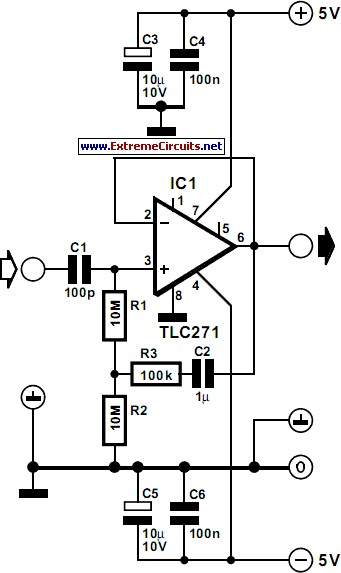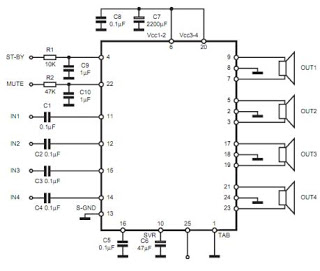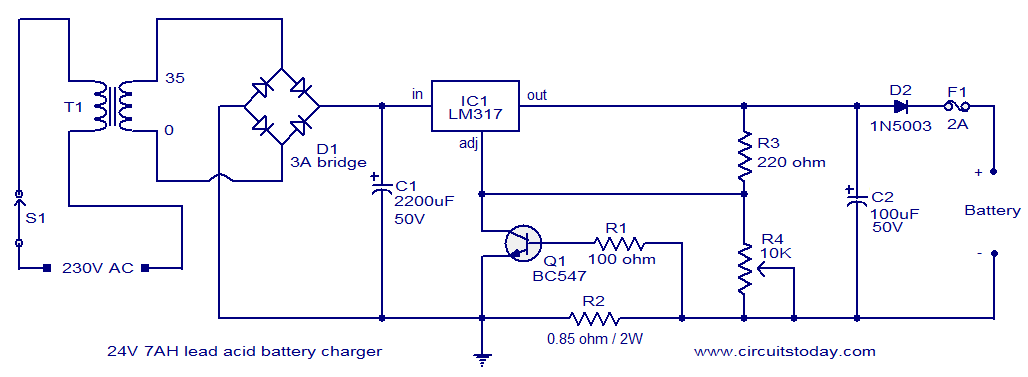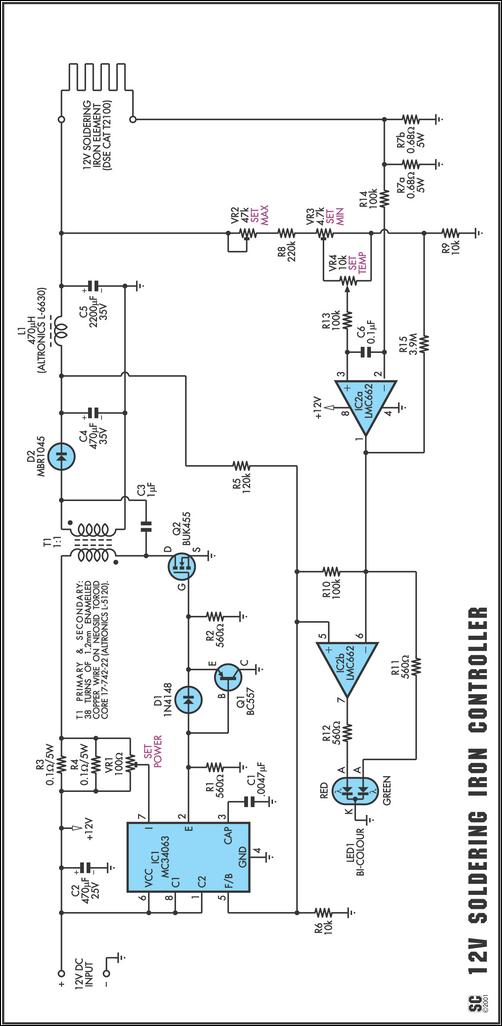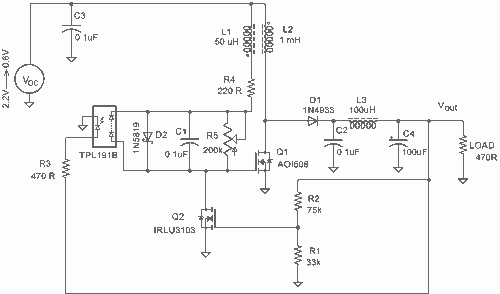
Capacitance Meter Circuit Using Transistors
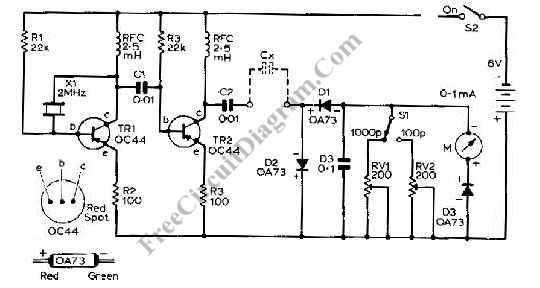
This capacitance meter circuit is similar to previous meter circuits, but it utilizes transistors instead of logic gates. A schematic diagram is provided.
The capacitance meter circuit operates by measuring the capacitance of a capacitor through a time-based method. The core of the circuit consists of a transistor-based oscillator that generates a square wave signal. This square wave is used to charge and discharge the capacitor under test.
The circuit typically includes a few key components: a transistor (often an NPN type), resistors, a variable resistor (potentiometer), and a capacitor for timing purposes. The capacitor under test is connected in parallel with a timing capacitor, and the charging time of this combination is measured. The time taken for the voltage across the timing capacitor to reach a certain threshold level is directly proportional to the capacitance of the capacitor being tested.
In operation, the transistor is configured in a common-emitter configuration, which allows it to amplify the oscillation signal. The output frequency of the oscillator is influenced by the capacitance value of the capacitor being tested, which can be calculated using the formula derived from the RC time constant.
An additional feature of the circuit may include a digital display or analog meter to provide a visual representation of the capacitance value. Calibration of the circuit is essential to ensure accurate readings, which can be achieved by using known capacitance values to adjust the circuit parameters.
Overall, this transistor-based capacitance meter offers a reliable and straightforward method for measuring capacitance, making it a valuable tool for electronics enthusiasts and professionals alike.This capacitance meter circuit is similar with previous meter circuit, but it uses transistors rather than logic gates. Here is the schematic diagram: You. 🔗 External reference
The capacitance meter circuit operates by measuring the capacitance of a capacitor through a time-based method. The core of the circuit consists of a transistor-based oscillator that generates a square wave signal. This square wave is used to charge and discharge the capacitor under test.
The circuit typically includes a few key components: a transistor (often an NPN type), resistors, a variable resistor (potentiometer), and a capacitor for timing purposes. The capacitor under test is connected in parallel with a timing capacitor, and the charging time of this combination is measured. The time taken for the voltage across the timing capacitor to reach a certain threshold level is directly proportional to the capacitance of the capacitor being tested.
In operation, the transistor is configured in a common-emitter configuration, which allows it to amplify the oscillation signal. The output frequency of the oscillator is influenced by the capacitance value of the capacitor being tested, which can be calculated using the formula derived from the RC time constant.
An additional feature of the circuit may include a digital display or analog meter to provide a visual representation of the capacitance value. Calibration of the circuit is essential to ensure accurate readings, which can be achieved by using known capacitance values to adjust the circuit parameters.
Overall, this transistor-based capacitance meter offers a reliable and straightforward method for measuring capacitance, making it a valuable tool for electronics enthusiasts and professionals alike.This capacitance meter circuit is similar with previous meter circuit, but it uses transistors rather than logic gates. Here is the schematic diagram: You. 🔗 External reference
